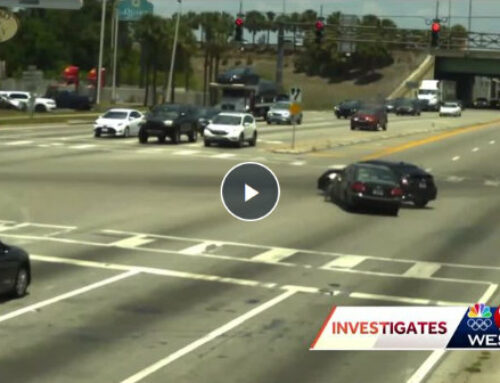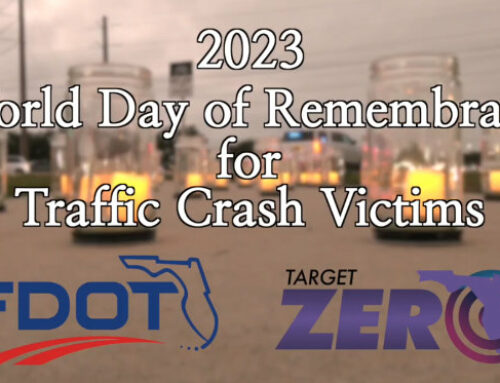In the world of student transportation safety, one event has consistently grabbed headlines and the attention of concerned citizens – School Bus Safety Week. In this in-depth news feature, we’ll take you on a journey through the remarkable history of School Bus Safety Week. From its early inception to its modern-day impact, we’ll uncover the facts, stories, and statistics that make this event a crucial fixture on the school transportation calendar. In this blog post, we’ll take a look at the origins, significance, and collaborative efforts behind School Bus Safety Week – a campaign that’s been making the news for all the right reasons.
The Birth of School Bus Safety Week
In the early 1970s, when concerns about student safety during their daily school commutes were on the rise, the National Association for Pupil Transportation (NAPT) took a pivotal step that would change the landscape of school bus safety forever.
Founded by a group of dedicated professionals in the school transportation sector, the NAPT recognized the pressing need for a dedicated week focused on educating the public about school bus safety. Their goal was twofold: to raise awareness about the significance of school bus safety and to acknowledge the unsung heroes – the individuals who ensure our children’s safety on the road day in and day out.
It was in this climate of concern and dedication that School Bus Safety Week was conceived. The NAPT’s vision was simple yet powerful – to create a platform that would educate not only students but also parents, teachers, and the general public about the paramount importance of school bus safety.
A Humble Beginning
The inaugural observance of School Bus Safety Week took place in October 1970, marking the very first chapter in a story that continues to this day. During this inaugural week, educational programs, safety demonstrations, and community outreach activities were organized across the nation. The aim was clear: to instill a sense of responsibility and vigilance when it came to school bus safety.
While the first observance may have been modest in scale compared to today’s celebrations, its significance was undeniable. It laid the foundation for an annual event that would grow and evolve over the decades, impacting countless lives along the way.
A Shared Commitment
One of the most remarkable aspects of School Bus Safety Week is the spirit of collaboration that underpins it. It brings together a diverse group of stakeholders, including school administrators, transportation professionals, law enforcement agencies, and concerned parents, all united by a common mission – ensuring the safety of our children as they embark on their educational journeys.
School Bus Safety Week is a shining example of what can be achieved when communities, organizations, and individuals join forces for a noble cause. It’s a celebration of shared commitment and a reminder that our children’s safety is a responsibility we all bear.
In the next section, we’ll delve deeper into the first observance of School Bus Safety Week and its impact, shedding light on the early steps that paved the way for the event’s enduring legacy.
The First Observance
As the crisp October air settled in the early 1970s, School Bus Safety Week made its inaugural appearance on the national stage, capturing the attention of communities and educators across the United States. This first observance marked the dawn of an event that would go on to become a cornerstone of school bus safety education.
Setting the Stage
In October 1970, the National Association for Pupil Transportation (NAPT) officially launched School Bus Safety Week, and the response was immediate and enthusiastic. The NAPT’s vision was clear – to create a dedicated week that would not only raise awareness about school bus safety but also recognize the diligent efforts of those who ensure our children’s safety on the roads.
Educational Programs in Action
During that first School Bus Safety Week, educational programs took center stage in schools, engaging students in vital safety lessons. These programs covered a wide array of topics, from safe boarding and disembarking to emergency procedures. The goal was to instill a culture of responsibility among students, fostering habits that would keep them safe throughout their school years.
Safety Demonstrations and Community Outreach
Safety demonstrations were another critical component of the inaugural observance. Schools and transportation departments organized mock drills to showcase emergency procedures in action. These demonstrations served as powerful reminders of the importance of preparedness and vigilance.
Community outreach activities, including seminars and workshops, engaged parents, teachers, and local law enforcement agencies. The aim was to create a network of informed individuals who could collectively contribute to safer school bus experiences for all children.
Impact and Legacy
The impact of that first School Bus Safety Week was palpable. It not only laid the groundwork for future observances but also ignited a passion for school bus safety in communities nationwide. Over the years, the event has grown in scale and scope, embracing innovative ways to educate and engage students and the public.
Today, School Bus Safety Week continues to be a beacon of safety education, with an enduring legacy that can be traced back to that modest yet impactful beginning in 1970. As we reflect on the first observance, we’re reminded that the commitment to protecting our children on their school journeys has been at the heart of this annual event from the very start.
Focus on Education and Outreach
School Bus Safety Week’s journey was just beginning in its inaugural year, but it was already clear that education and outreach would be at the core of its mission. Over the years, this focus on education and community engagement has grown, shaping the event into what it is today—a powerful force for promoting school bus safety.
Expanding Horizons
As the years passed, School Bus Safety Week expanded its horizons. It wasn’t just about safety drills and demonstrations anymore; it had become a platform for a comprehensive approach to safety education. The week-long event began to encompass a diverse range of educational programs and activities.
Empowering Students
One of the key objectives of School Bus Safety Week was—and remains—to empower students with the knowledge and skills they need to stay safe while commuting to school. The event encourages schools and transportation departments to create innovative programs that engage students in a fun and educational way.
These programs cover a wide spectrum of topics, including:
- Safe boarding and disembarking procedures
- Emergency evacuation drills
- Behavior expectations while on the bus
- Sharing the road safely with school buses
Engaging Parents and Communities
It’s important to remember, School Bus Safety Week isn’t just about students; it’s about the entire school community. Parents, teachers, and the broader community play pivotal roles in ensuring school bus safety. Workshops, seminars, and community events are organized to engage these important stakeholders.
These initiatives help parents understand the importance of school bus safety and equip them with the knowledge to reinforce safe practices at home. Teachers are encouraged to incorporate safety lessons into their curriculum, reinforcing what students learn during the week.
Collaborative Efforts
The success of School Bus Safety Week hinges on collaboration. It’s a true community effort, with school administrators, transportation professionals, law enforcement agencies, and concerned parents working hand in hand. By fostering a sense of shared responsibility, the event has become a catalyst for positive change in school bus safety.
A Modern Approach
In the digital age, School Bus Safety Week has adapted to new communication channels. Online resources, interactive websites, and social media campaigns have been integrated to reach a broader audience and ensure that the message of safety resonates with the tech-savvy generations of today.
A Collaborative Effort
One of the most remarkable aspects of School Bus Safety Week is the unity it inspires among diverse stakeholders. It’s a shining example of what can be achieved when communities, organizations, and individuals join forces for a shared cause – ensuring the safety of our children during their daily school commutes.
School Administrators and Transportation Professionals
At the heart of School Bus Safety Week are dedicated professionals who oversee the safe transportation of students. School administrators and transportation professionals work tirelessly to plan and execute safety programs, drills, and activities that prepare students for safe bus journeys. Their commitment to safety extends beyond the week, as they continually implement best practices throughout the school year.
Law Enforcement Agencies
Local law enforcement agencies are vital partners in the School Bus Safety Week initiative. They help raise awareness about the importance of obeying traffic laws related to school buses. Officers monitor traffic around school zones and enforce laws that protect students as they board and disembark from buses. Their visible presence serves as a powerful deterrent to reckless driving.
Concerned Parents and Guardians
Parents and guardians are integral to School Bus Safety Week’s success. They actively engage in safety discussions, attend workshops, and reinforce the importance of safe behaviors at home. Their involvement is crucial in creating a culture of responsibility and vigilance within families.
Educators
Teachers play a significant role in educating students about school bus safety. They incorporate safety lessons into their curriculum, reinforcing the importance of following safety protocols while on the bus. By doing so, they ensure that safety remains a priority throughout the school year, not just during the designated week.
Community Engagement
Beyond these core groups, School Bus Safety Week fosters community-wide engagement. Local businesses often lend their support, sponsoring safety events and activities. Media outlets help spread the word, amplifying the message of school bus safety. It truly takes a village to ensure the safety of our children, and School Bus Safety Week brings this village together.
A Unified Vision
What makes School Bus Safety Week extraordinary is the shared vision of all these stakeholders – a vision where every child can travel to and from school safely. It’s a vision that transcends differences and unites communities for a common purpose.
The Impact of School Bus Safety Week
Since its inception, School Bus Safety Week has emerged as a powerful force for change in the realm of school transportation safety. It has left an indelible mark, not only in terms of awareness but, most importantly, in the tangible improvements in the safety of our children during their daily journeys to and from school.
Reducing Accidents and Injuries
One of the most compelling indicators of School Bus Safety Week’s success is its role in reducing accidents and injuries related to school bus transportation. By educating students, parents, and the public about safe practices, the event has contributed to a decline in school bus-related incidents.
Through campaigns and initiatives, School Bus Safety Week has emphasized the importance of obeying traffic laws, particularly those regarding stopping for school buses. This vigilance has translated into fewer accidents, fewer injuries, and safer roads for our children.
Elevating Awareness and Responsibility
Beyond the statistics, School Bus Safety Week has elevated awareness and a sense of responsibility in communities nationwide. It serves as an annual reminder that the safety of our children is a shared responsibility, one that involves everyone – from school administrators to bus drivers to parents and motorists.
Promoting a Culture of Safety
Perhaps one of its most enduring legacies is the lasting impact it has on students. The safety lessons learned during School Bus Safety Week become ingrained in young minds, shaping behaviors and attitudes that extend far beyond the event’s duration. It promotes a culture of safety that students carry with them throughout their lives.
Engaging the Community
School Bus Safety Week’s community engagement efforts have also paid dividends. It has drawn in local businesses, media outlets, and civic organizations, creating a network of support for school bus safety. These collaborative efforts have made school bus safety a year-round priority, not just during the designated week.
A Constant Evolution
As the world changes, so too does School Bus Safety Week. It adapts to new communication channels, embracing the digital age to reach a broader audience. Interactive websites, online resources, and social media campaigns have become essential tools for spreading the message of safety to today’s tech-savvy generations.
A Continuation of Commitment
In conclusion, School Bus Safety Week is not merely an event; it’s a continuation of a commitment – a commitment to protecting our children on their daily journey to and from school. It’s a testament to what can be achieved when communities come together with a shared goal.
As we celebrate each School Bus Safety Week, let us reflect on the progress made and the work that remains. It’s a reminder that, in the pursuit of safety, there’s always room for improvement, innovation, and collaboration. Ultimately, it’s a celebration of our unwavering dedication to ensuring the safety and well-being of the youngest members of our society.
Additional Resources
For those who wish to delve deeper into the world of school bus safety and School Bus Safety Week, there is a wealth of additional resources available. Here are some valuable sources of information and support:
- National Association for Pupil Transportation (NAPT):
- The official website of the NAPT offers a treasure trove of resources, including safety guidelines, research reports, and news updates related to school bus safety.
- Website: NAPT
- National Highway Traffic Safety Administration (NHTSA):
- The NHTSA provides comprehensive information on school bus safety regulations, statistics, and campaigns.
- Website: NHTSA School Bus Safety
- Local School District Websites:
- Many school districts maintain websites with information on their specific school bus safety programs, resources for parents, and contact information for transportation departments.
- Educational Materials for Parents and Students:
- Organizations like Safe Kids Worldwide offer downloadable educational materials, including coloring books and safety tip sheets for parents and students.
- Website: Safe Kids Worldwide
- Government Publications:
- Explore government publications and reports related to school bus safety, often available for free download from relevant government websites.
- Safety Organizations and Advocacy Groups:
- Numerous safety organizations and advocacy groups are dedicated to promoting school bus safety. These organizations often provide valuable resources, research, and advocacy efforts.
- School Bus Safety Week Events:
- Stay updated on local and national School Bus Safety Week events, workshops, and activities by checking event calendars and news sources.
- Social Media and Online Communities:
- Engage with online communities and social media groups dedicated to school bus safety. These platforms are excellent for exchanging ideas, experiences, and best practices.
- Books and Publications:
- Look for books and publications authored by experts in the field of school bus safety. These can offer in-depth insights and practical advice.
- Local School Transportation Departments:
- Reach out to your local school transportation department for information specific to your area, including safety policies and contact details for transportation professionals.
By exploring these additional resources, you can deepen your understanding of school bus safety and contribute to the ongoing efforts to ensure the safety of our children during their daily school commutes.






